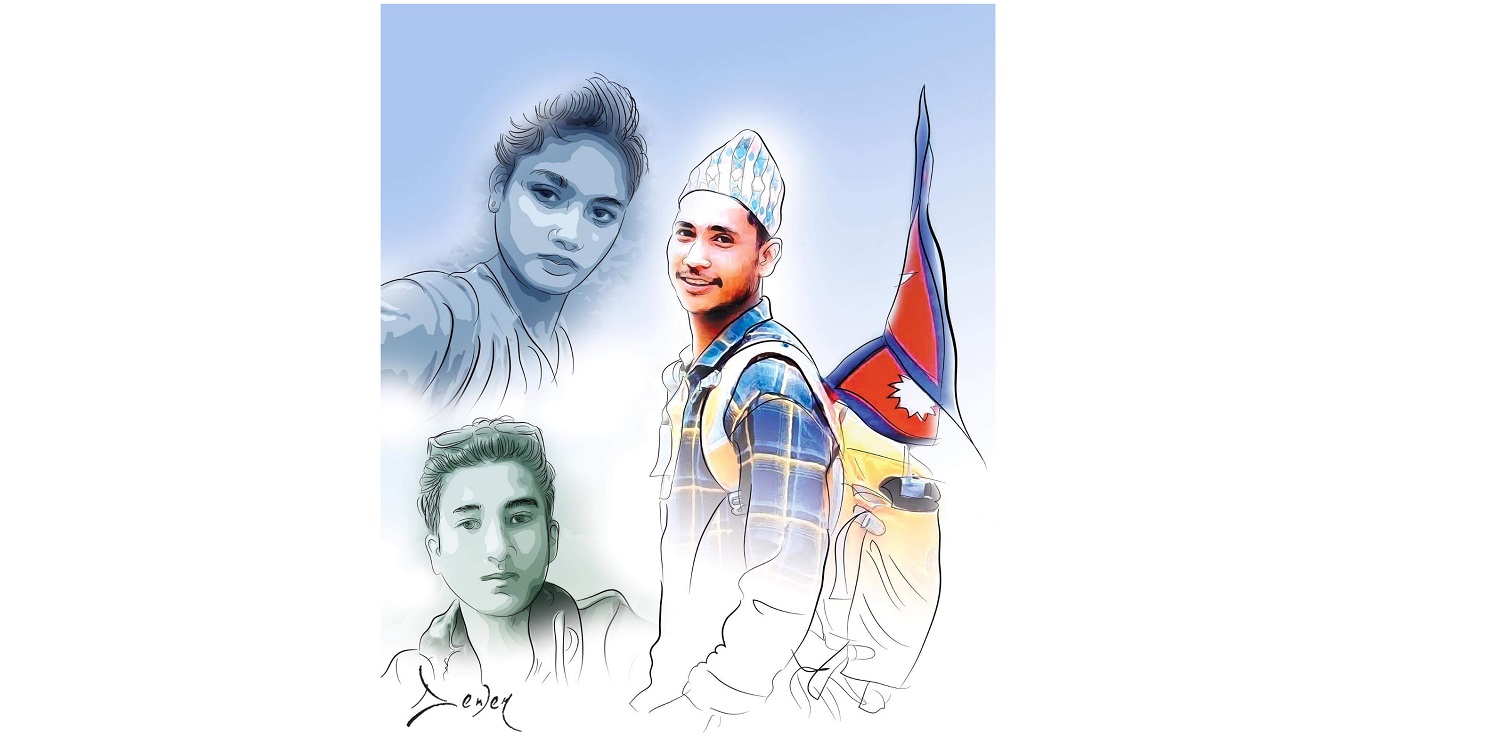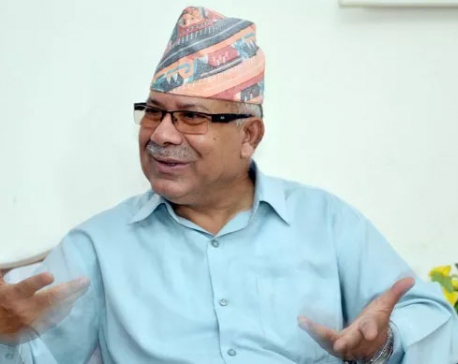
OR
“I am not angry at what happened to Nabaraj. I am scared that it will happen to me.”
Published On: December 9, 2020 08:00 AM NPT By: Binayak Sundas


Binayak Sundas
Binayak Sundas is the Assistant Professor at Centre for Himalayan Studies, University of North Bengal, Siliguribinayaksundas@gmail.com
Those fighting for justice for Nabaraj and his friends must continue the struggle. Young Dalits must fight for equitable education and become a voice that will change the structures from within.
A few days ago, the Surkhet High Court granted a bail set at Rs 100,000 each to the five accused in the lynching of Nabaraj Biswakarma and his friends. While not questioning the judgment, the legal precedent, or the judiciary itself, the real cause of concern here is the message it has conveyed.
An acquaintance who runs an educational institution providing for underprivileged children in Nepal narrated an incident. One of her students, a 16-year-old boy Nishant Biswakarma wrote in an essay: “I am not angry at what happened to Nabaraj. I am scared that it will happen to me.” Nishant's concern summarizes what every Dalit in Nepal is feeling at the moment. It conveys to Dalits and non-Dalits alike that a price can be set on the life of a Dalit in Nepal.
In the act of cultural Talibanisation in Darjeeling a decade ago, we were forced to don cultural attire. Some of us had to cross the border in search of skilled tailors. One of them, realizing that I too was a Damai, in a moment of Jatiya confidentiality, told me that with the Maoist in charge, there was no longer the need to fear the caste system. With a broad smile, he confided that his son had married a Bahuni. The fact that Nawaraj was killed in Rukum, considered by many as a Maoist stronghold and symbolically important for them, should tell you all that you need to know about how misplaced that man’s hope was.
The lack of political will, despite Baburam Bhattarai's impassionate speech, is now quite apparent. If the constitution had not made promises, including Kathmandu's liberal elite with their media and educational institutions convincing Dalits that things were about to change (Naya Nepal), then it would have been business as usual. Dalits would have remained hidden in the shadows, remaining mindful of all the ritual necessities as it had been for the last 800 years or so. Nabaraj and his friends would have never visited the girl’s village, deluded by the misleading promise of a Naya Nepal. Amidst the illusion of progress and development, they forgot to read the fine print that they are not to be included.
When George Floyd's killer, Darek Chauvin, was granted a bail, it caused a large scale reaction by many sections of American society mainly because the media covered it well. However, the bail granted to Nabaraj and his friends' killers has not been covered in detail by any of Nepal’s mainstream media—print, digital or television. As factual as it is, ascribing this to a nexus of state, class, caste, and media would appear to be a conspiracy theory rather than a well-reasoned argument.
Let us begin with the fact that most print, television, and digital media, especially those using English as a medium, cater to a particular section of the society who mostly live behind large gated walls with notions of Nepal having begun with the benevolent and heroic ideal of a unified nation taught in schools. With Western media portrayals' help, that notion has transformed into an exotic landscape of a beautiful, spiritual, and peaceful Nepal. This depiction continues to fuel the Nepali tourism industry and, in many ways, allows for its internalization by a distinct section of Nepali youth in Nepal, especially those living in Kathmandu, educated in elite schools, and usually pursuing higher education abroad. The news of a Dalit's lynching goes against Nepal's more tolerable narrative of an exotic and peaceful Nepal and the associated imagined reality.
The second aspect is built upon the premise of how discourses—academic or otherwise—within Nepal have been shaped. The influence of Western developmental agencies operating within the country, or simply via the funds that they provide, have made sure that their preferred discourse is interwoven with the concept of bikas. Since such organizations employ or at the very least impact a large section of the liberal, elite class of Kathmandu, this has influenced how both the academic discourses within the various disciplines and the media's normative narrative are structured. This is not to suggest that Dalits are not recipients of their charity; some organizations work directly with Dalits. Yet, the structure remains that of donor and recipient without addressing the core issues of why casteism perpetuates. As far as donors and developmental agencies are concerned, the concept of Nepal as a poor and underdeveloped—but essentially peaceful—country with beautiful landscapes is crucial to its appeal. Hence, the barbaric lynching of Dalits is complicated to reason.
The belief in one of the oldest forms of racism by certain caste groups to which, not surprisingly, most intermediaries of such developmental organizations also belong, is at the very least, problematic for that appeal. Silence then becomes necessary while allowing a state structure dominated by the same caste group to suppress the issue quietly. It almost seems like a foregone conclusion that those seeking justice for Nabaraj will not stand a chance in such a structural disadvantage.
What then is the solution? The above seems to be a mere statement of the obvious. For one, those fighting for justice for Nabaraj and his friends must continue the struggle. As the renowned journalist from India, Ravish Kumar, said, “some battles are not fought to be won but simply to let the world know that there was someone there on the battlefield.” For the long term, as unlikely as it may seem, the 16-year-old Nishant Biswakarma, who lives miles away from Rukum and is of no relation to Nabaraj but fears he will be next, is part of the solution. Ignoring Nepal's educational system's inherent barriers, young Dalits like him must fight for equitable education, push to the fore in the state apparatus, or become a voice that will change the structures from within.
Remembering Angira Pasi, Sangita Biswakarma, Asmita Sarki, Laxmi Pariyar, Ajit Mijhar, Rajesh Nepali—all killed without repercussions in the name of caste—until there is more representation of Dalits in judiciary, police, media, government, etc.
Nepal may very well make the lynching of Dalits a national sport, the price of participation only Rs 100,000.
You May Like This
_20201014060614.jpg)
Nepal abstains from voting as UNHRC adopts resolution against Sri Lanka's human rights record
KATHMANDU, March 23: Nepal has chosen to abstain from voting in the United Nations Human Rights Council on a resolution... Read More...

Govt should prioritize Miss Nepal: Miss Nepal Shrinkhala Khatiwada
MAKWANPUR, April 24: Newly crowned Miss Nepal World 2018, Shrinkhala Khatiwada has urged the government to prioritize the pageant as... Read More...

Party's name will be Nepal Communist Party after merger: Leader Nepal
KAILALI, Feb 9: CPN-UML leader Madhav Kumar Nepal said that the name of the new party after merger between CPN-UMLand... Read More...











Just In
- Challenges Confronting the New Coalition
- NRB introduces cautiously flexible measures to address ongoing slowdown in various economic sectors
- Forced Covid-19 cremations: is it too late for redemption?
- NRB to provide collateral-free loans to foreign employment seekers
- NEB to publish Grade 12 results next week
- Body handover begins; Relatives remain dissatisfied with insurance, compensation amount
- NC defers its plan to join Koshi govt
- NRB to review microfinance loan interest rate







Leave A Comment